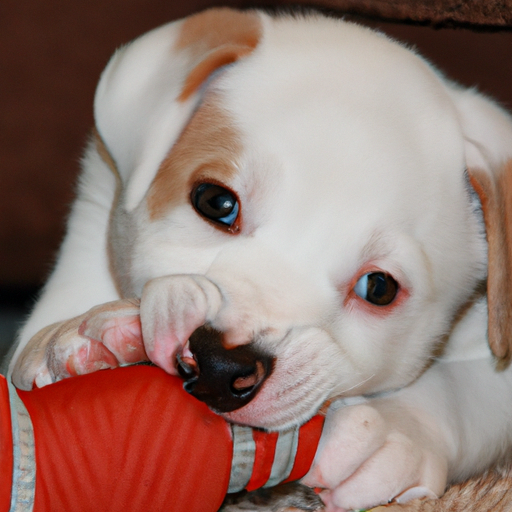Caring for a teething puppy can be a challenging task. You, as a caregiver, undoubtedly want to provide the best possible care for your furry friend. This article will guide you through the process, providing detailed insights and practical tips to help you navigate this stage of your puppy’s life.
Understanding the Dog Teething Process
Just like human babies, puppies also go through a teething process. This begins when they are about three weeks old, when their first set of baby teeth, also known as deciduous teeth, start to emerge. By the time they are eight weeks old, they typically have a full set of 28 baby teeth.
Around the age of four months, these baby teeth begin to fall out to make way for their 42 adult teeth. This process can be uncomfortable for puppies, causing them to chew on everything in sight. It can also result in symptoms such as drooling, swollen gums, and a decrease in appetite.
Signs of Teething in Puppies
As a caregiver, it’s important to be aware of the signs that your puppy is teething. These may include:
- Increased chewing
- Drooling
- Decreased appetite
- Red, swollen gums
- Finding baby teeth around the house
How to Soothe a Teething Puppy
To help your puppy through this uncomfortable time, there are several things you can do:
- Provide Chew Toys: These are ideal for soothing a puppy’s sore gums and keeping them occupied. Make sure the toys are safe and appropriate for puppies.
- Use Frozen Treats: Frozen carrots, ice cubes, or special puppy teething toys can provide relief.
- Massage Their Gums: With a clean finger, you can gently massage your puppy’s gums to alleviate discomfort.
When to Seek Veterinary Assistance
While teething is a normal part of puppyhood, there are times when it may be necessary to seek veterinary assistance. If your puppy is experiencing severe discomfort, not eating, or if you notice excessive bleeding, it’s time to consult a vet.
Preventing Damage During Teething
Puppies love to chew during this period, which can lead to damage around your home. Here are some tips to prevent this:
- Puppy-proof your home by removing items your puppy could chew on.
- Provide plenty of appropriate chew toys.
- Use deterrent sprays on furniture and other items you want to protect.
Training During the Teething Stage
Teething is an important time to reinforce good habits and discourage bad ones. If your puppy starts to chew on something inappropriate, redirect them to a chew toy. Make sure to praise them when they chew on the correct items.
The Importance of Dental Care
Once your puppy’s adult teeth have come in, it’s important to start a dental care routine. This includes regular brushing and providing dental chews.
| Dental Care Tips | Description |
|---|---|
| Brushing | Use a dog-friendly toothpaste and brush. Start slowly and gradually increase brushing time. |
| Dental Chews | These can help clean your dog’s teeth and freshen their breath. |
| Regular Check-ups | Your vet can check for any dental issues during regular check-ups. |
Frequently Asked Questions about Dog Teething
1. When does teething in puppies end?
Teething generally ends when your puppy is around six months old, once all their adult teeth have come in.
2. What can I give my puppy for teething pain?
You can provide chew toys, frozen treats, and gentle gum massages. If your puppy seems to be in extreme discomfort, consult your vet.
3. Do puppies sleep more when teething?
Yes, the discomfort of teething can make puppies sleep more than usual.
4. Can teething cause diarrhea in puppies?
While it’s not common, some puppies may experience soft stools or diarrhea due to teething. If this happens, consult your vet.
By understanding the teething process and knowing how to provide relief, you can help your puppy navigate this stage with as little discomfort as possible. Always remember, every puppy is unique and may experience teething differently. So, always be patient and provide the care they need during this trying time.



